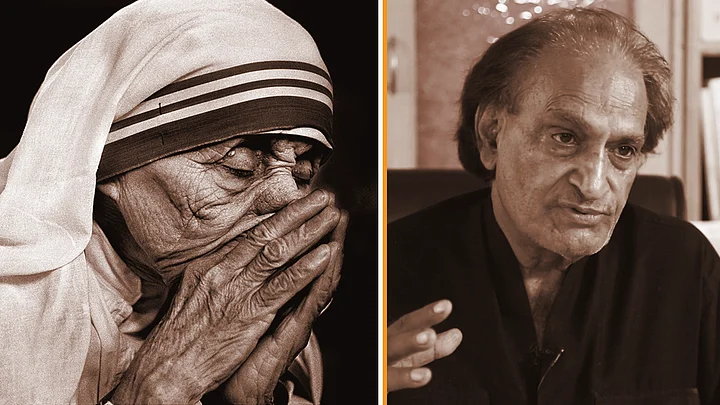(This story was first published on 14 November 2015 and is being republished from The Quint’s archives to mark Raghu Rai’s birth anniversary)
Veteran photojournalist Raghu Rai was conferred the Lifetime Achievement Award at the 6th National Photography Awards on 23 March 2017.
A Padma Sri awardee, Rai began his career in photography in 1965. His photos have been published in Time, Life, The New York Times and Sunday Times.
On his birth anniversary (18 December), we are sharing an interview with India’s best-known photojournalist on his five most iconic photographs.
Photographer Raghu Rai has witnessed India’s sojourn in the last five decades through the lens of his camera. As a veteran chronicler, Rai has first-hand accounts of events that have had a definitive impact on the country’s destiny.
India is a country of contrasts and contradictions. Entities, people and sects have lived together and sometimes fought together.Raghu Rai
Though it doesn’t do complete justice to Rai’s body of work, he shared the story behind five of his most iconic photographs with The Quint.
Humayun’s Tomb, 1965 - A Different Delhi
Way back in 1965, when I started using a camera, Delhi’s landscape was very different. I was near the Ring Road and saw Humayun’s Tomb. At that time there was a railway track and wheat fields in front of it.
After the harvest, bullocks were working in the field and there was a train in the backdrop. When you look at that picture today, it looks like a photo history of another century, which amazes me as well when.
The purpose of photography is to capture the time we live in.
The purpose of photography is to capture the time we live in. History is written and re-written but visual history can’t be re-written.
A Day in the Life of Indira Gandhi, 1967
There was nobody else in the Congress as strong-minded and as powerful as her. I was spending a day with Indira Gandhi. A delegation of Congress men was visiting her in the Parliament House. All these senior Congress men were standing and waiting for her while she signed some papers. I took a picture from over her shoulder. It showed the power of a woman prime minister.
Mother Teresa’s Faith, 1990s
Mother Teresa was a mother to everybody. She believed in compassion and seva. To rejuvenate herself, she would sit and pray to god. You can see her connect with the lord.
A Lonely, Tortured Man – Manmohan Singh, 2014
Since the 90s, I had almost given up photographing politicians since I felt none of them were worth spending time with. Before the 2014 general elections, I thought of checking out what was the latest in the political arena.
There was a Congress session a few months before the elections, and I had not attended one in 20 years.
All senior Congress leaders were sitting on the stage. Then Sonia Gandhi, Manmohan Singh and Rahul Gandhi entered.
Nobody spoke to Manmohan Singh when he entered. Everyone wished Sonia and Rahul. I didn’t see anyone on the stage getting up and going to meet him. In my earlier sessions, the Prime Minister was always the leader.
It was shameful and shocking.
I was there for five long hours. He did not speak to anybody. No one spoke with him. He was a lonely, tortured man. As if he did not exist, leave alone being the prime minister of a country. It was shameful and shocking.
Modi’s Charm
At the BJP sessions (before the elections and a day after the Congress session) Modi was being projected as the prime ministerial candidate. I saw LK Advani, Arun Jaitley and everyone else looking very serious. Modi entered and the crowd went “Modi, Modi, Modi”. And Modi spoke with all the gestures and style that he had acquired.
Rai covered both Modi and Manmohan in a book – The Outgoing Prime Minister.
The outgoing PM didn’t speak a word, his silence was deafening. The new Prime Minister spoke so much that even Mahatma Gandhi would have said that he spoke for both of us.
(This story is from The Quint’s archives and was first published in November 2016. It is being republished on the occasion of Raghu Rai’s 75th birth anniversary.)
(At The Quint, we question everything. Play an active role in shaping our journalism by becoming a member today.)
